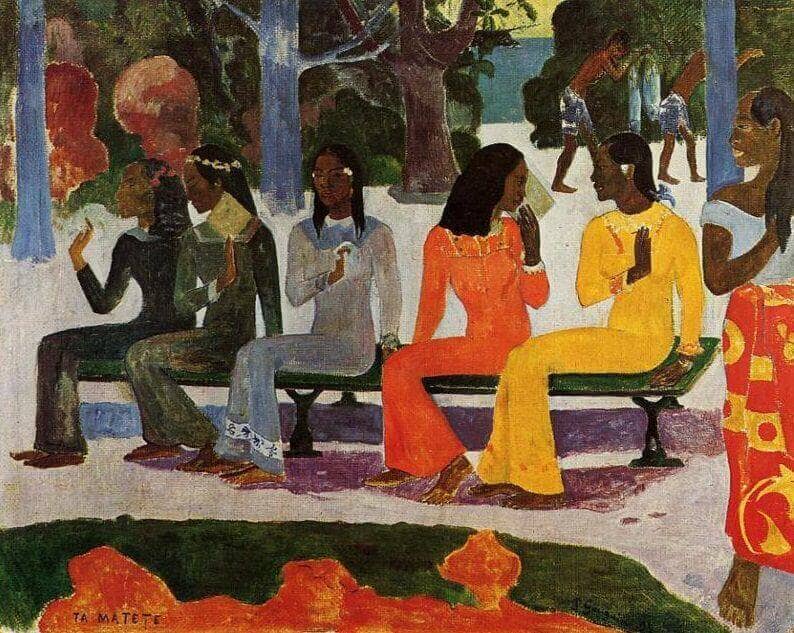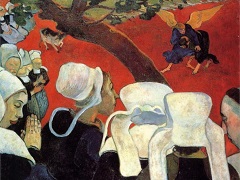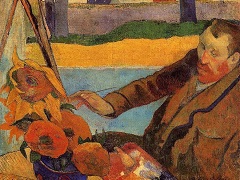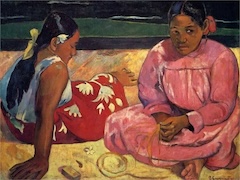Ta Matete (We Shall Not Go to Market Today), 1892 by Paul Gauguin

It is one of the most constant characteristics of Gauguin's art that while his sources of inspiration remain clear and undisguised, they contribute to an entirely original creation. Here unmistakably Egypt has been put to his own uses: the sequence of seated figures, all aligned and hardly overlapping, the combination of profile and frontal views, the rigid gestures, the long robes, the accentuated fingers, and the accented silhouettes, recall the intaglio reliefs of the temples of the Nile. "Line is a means of accentuating an idea," said Gauguin.
The clarity of the Egyptian technique, its rhythmic alternation of bodily contour and intervening space, its unifying harmony of proportion which allowed him both the "mystery" of which he was so fond, and a grace without softness, all these appealed to the painter's sense of style.
"Have always before you the Persians, the Cambodians, and a little of the Egyptians." Although this, perhaps Gauguin's most famous critical phrase, was actually written in connection with sculpture in the round (and at a somewhat later date), it fits this canvas perfectly. For to the incisive Egyptian contour and pose have been added the flat color areas of the Persian print, and the spaced verticals of the backgrounds of Indonesian reliefs.
Of course Gauguin, in Tahiti, had never seen any such hieratic, solemn, and well-ordered frieze of figures, static in themselves, full of movement to the eye in their rhythmic arrangement. He translated his everyday reality through this wide diversity of styles, because they helped him to create the mood simple, dignified, and full of wonder that for him was the meaning of primitive.















